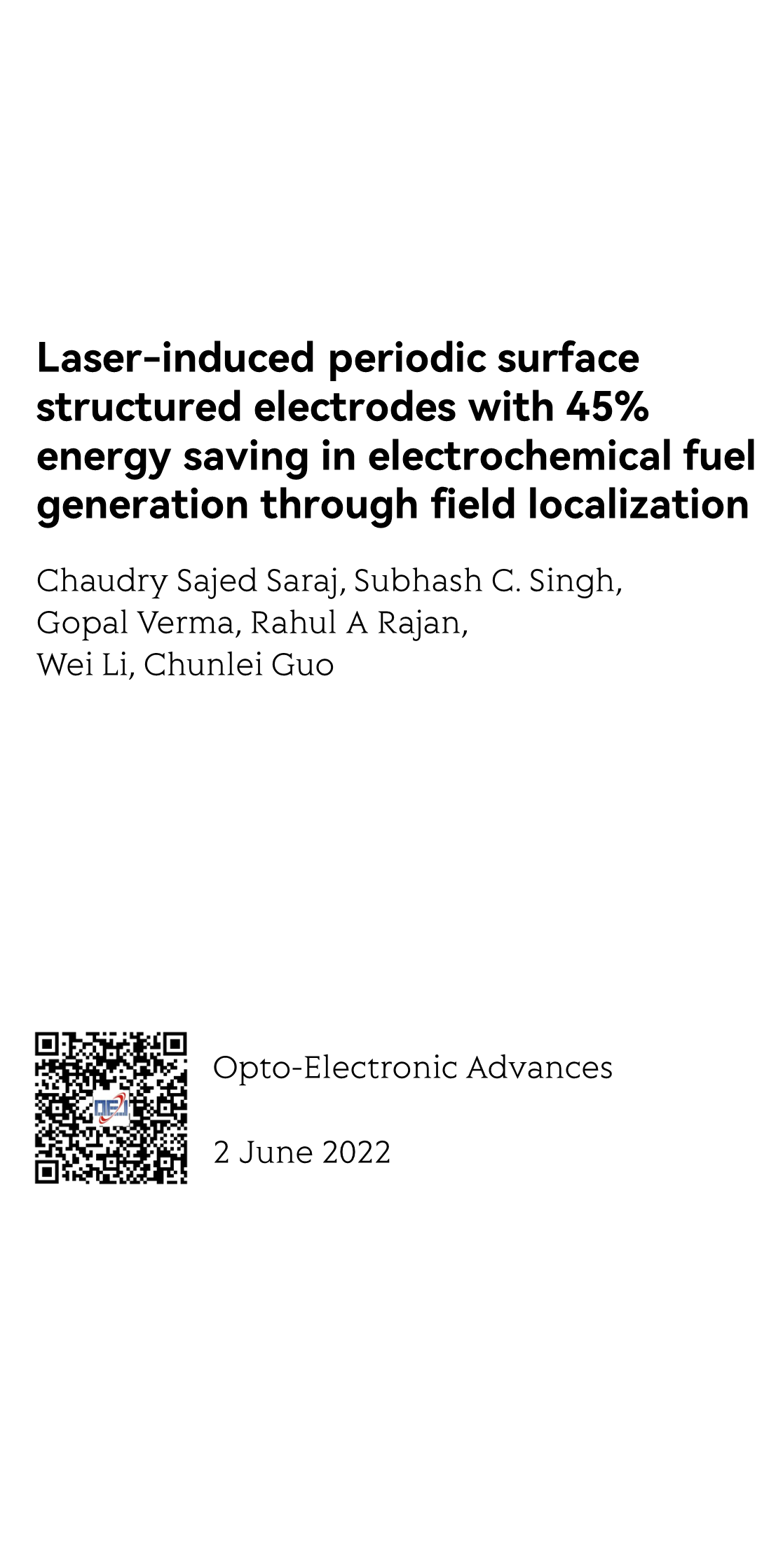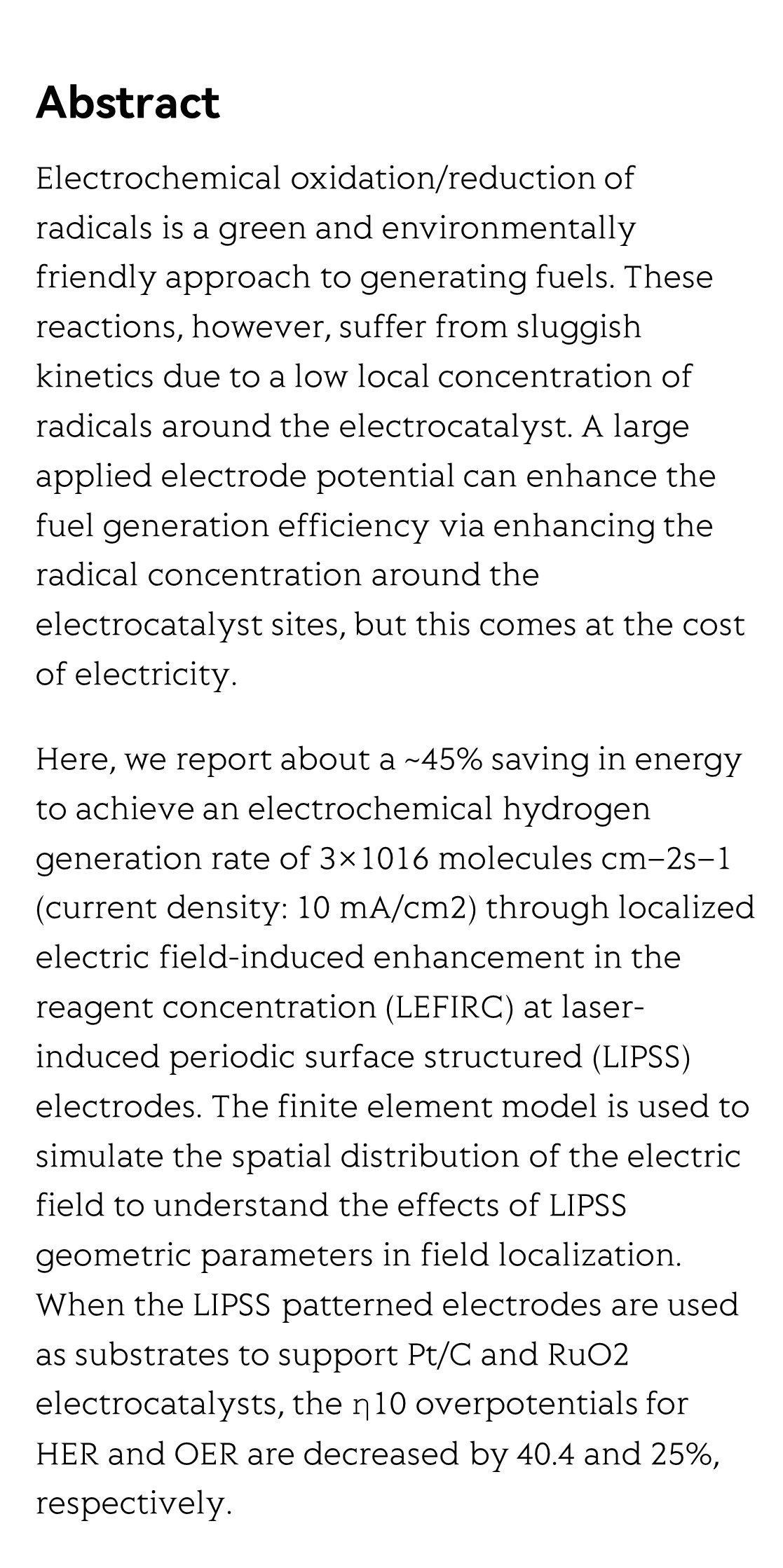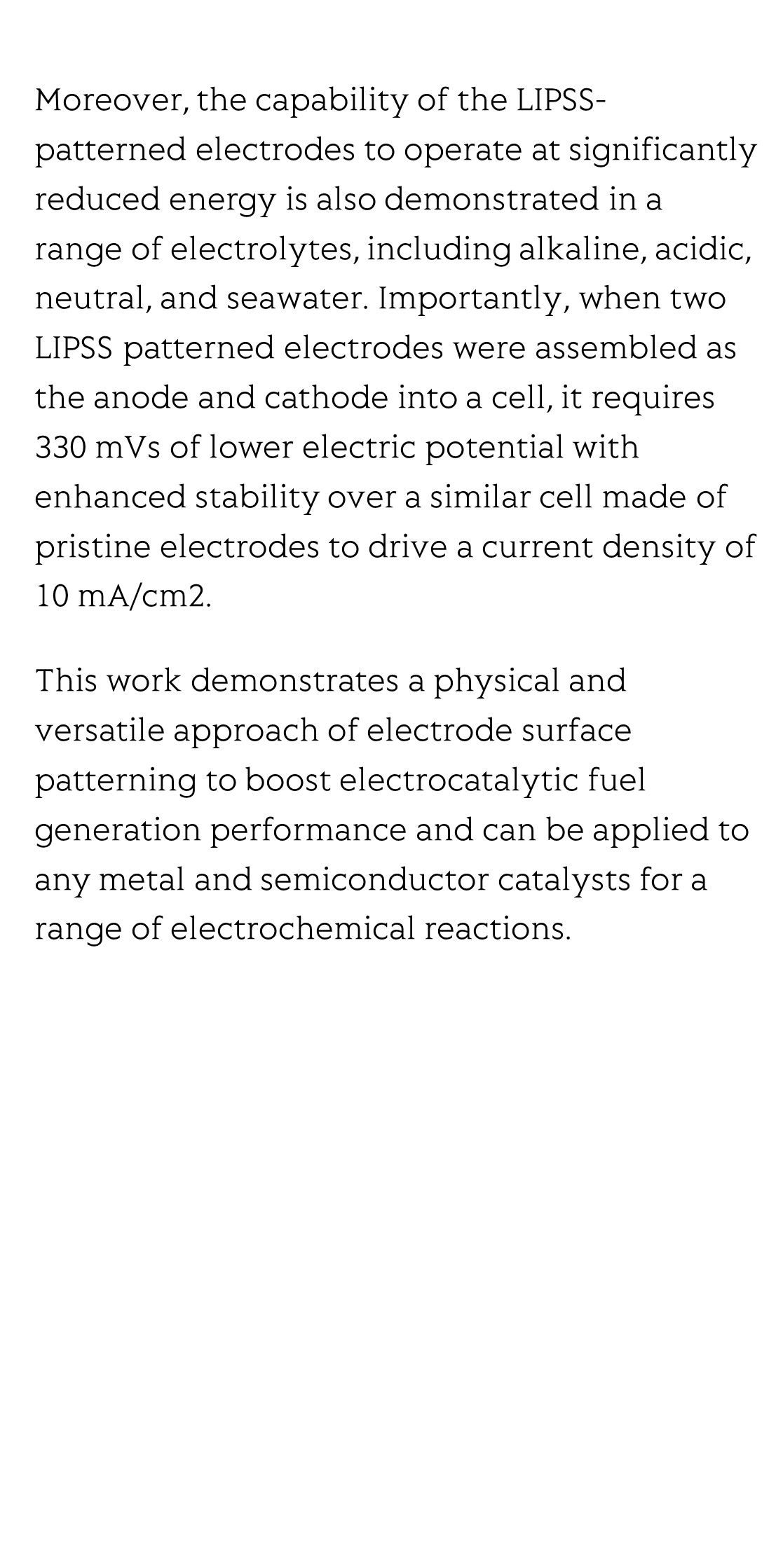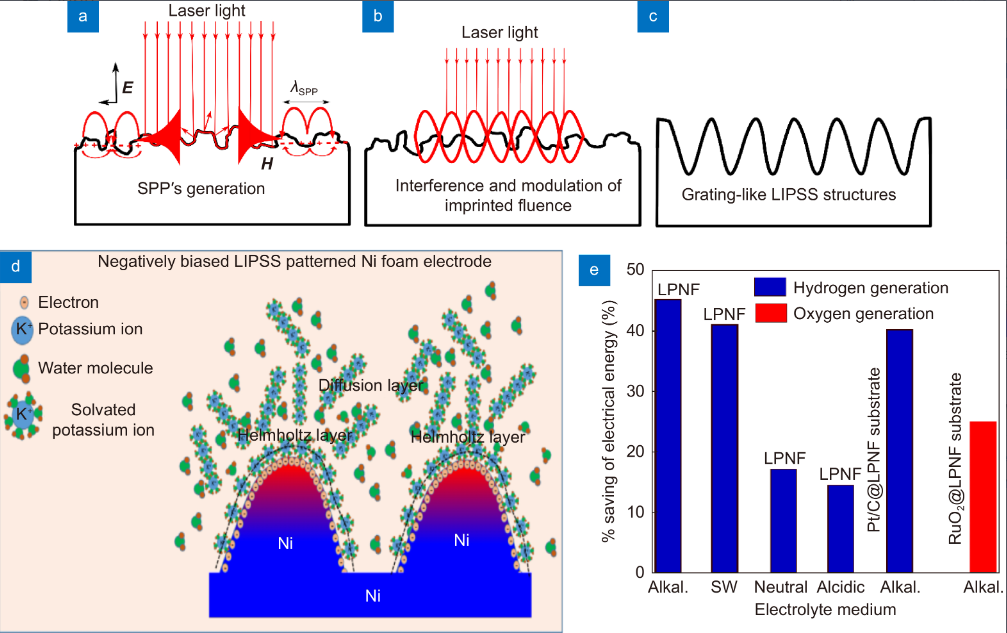(Peer-Reviewed) Laser-induced periodic surface structured electrodes with 45% energy saving in electrochemical fuel generation through field localization
Chaudry Sajed Saraj ¹ ², Subhash C. Singh ¹ ³, Gopal Verma ¹, Rahul A Rajan ¹ ², Wei Li 李炜 ¹ ², Chunlei Guo 郭春雷 ³
¹ GPL Photonics Lab, State Key Laboratory of Applied Optics, Changchun Institute of Optics, Fine Mechanics and Physics, Chinese Academy of Sciences, Changchun 130033, China
中国 长春 中国科学院长春光学精密机械与物理研究所 应用光学国家重点实验室 微纳光子学与材料国际实验室
² University of Chinese Academy of Sciences (UCAS), Beijing 100049, China
中国 北京 中国科学院大学
³ The Institute of Optics, University of Rochester, Rochester, NY 14627, USA
Opto-Electronic Advances, 2022-06-02
Abstract
Electrochemical oxidation/reduction of radicals is a green and environmentally friendly approach to generating fuels. These reactions, however, suffer from sluggish kinetics due to a low local concentration of radicals around the electrocatalyst. A large applied electrode potential can enhance the fuel generation efficiency via enhancing the radical concentration around the electrocatalyst sites, but this comes at the cost of electricity.
Here, we report about a ~45% saving in energy to achieve an electrochemical hydrogen generation rate of 3×1016 molecules cm–2s–1 (current density: 10 mA/cm2) through localized electric field-induced enhancement in the reagent concentration (LEFIRC) at laser-induced periodic surface structured (LIPSS) electrodes. The finite element model is used to simulate the spatial distribution of the electric field to understand the effects of LIPSS geometric parameters in field localization. When the LIPSS patterned electrodes are used as substrates to support Pt/C and RuO2 electrocatalysts, the η10 overpotentials for HER and OER are decreased by 40.4 and 25%, respectively.
Moreover, the capability of the LIPSS-patterned electrodes to operate at significantly reduced energy is also demonstrated in a range of electrolytes, including alkaline, acidic, neutral, and seawater. Importantly, when two LIPSS patterned electrodes were assembled as the anode and cathode into a cell, it requires 330 mVs of lower electric potential with enhanced stability over a similar cell made of pristine electrodes to drive a current density of 10 mA/cm2.
This work demonstrates a physical and versatile approach of electrode surface patterning to boost electrocatalytic fuel generation performance and can be applied to any metal and semiconductor catalysts for a range of electrochemical reactions.
Flicker minimization in power-saving displays enabled by measurement of difference in flexoelectric coefficients and displacement-current in positive dielectric anisotropy liquid crystals
Junho Jung, HaYoung Jung, GyuRi Choi, HanByeol Park, Sun-Mi Park, Ki-Sun Kwon, Heui-Seok Jin, Dong-Jin Lee, Hoon Jeong, JeongKi Park, Byeong Koo Kim, Seung Hee Lee, MinSu Kim
Opto-Electronic Advances
2025-09-25
Dual-frequency angular-multiplexed fringe projection profilometry with deep learning: breaking hardware limits for ultra-high-speed 3D imaging
Wenwu Chen, Yifan Liu, Shijie Feng, Wei Yin, Jiaming Qian, Yixuan Li, Hang Zhang, Maciej Trusiak, Malgorzata Kujawinska, Qian Chen, Chao Zuo
Opto-Electronic Advances
2025-09-25







